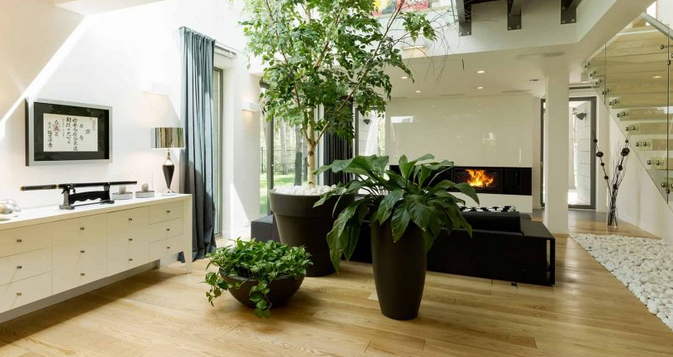
|
Getting your Trinity Audio player ready...
|
When it comes to brightening up your living space and adding a touch of elegance, skylights are a fantastic choice. They not only flood rooms with natural light but also offer a unique design element that can transform the ambience of your home. In this article, we’ll explore the key considerations for choosing the right skylight design that complements your space and enhances its aesthetic appeal.

Skylight design for your space
Understanding Skylight Design Basics
Skylight design goes beyond merely providing a source of natural light; it plays a crucial role in the overall aesthetics and functionality of a space. Before delving into specific design options, it’s essential to understand the basic types of skylights available.
Tubular Skylights
These are smaller in size and work well in spaces with limited roof space. They use reflective tubes to capture and transmit sunlight into a room.
Factors to Consider When Choosing Skylight Design
Room Purpose
Consider the purpose of the room where you plan to install the skylight. For instance, a kitchen might benefit from a ventilating skylight to dissipate cooking odours, while a bedroom could benefit from a fixed skylight for a calming ambience.
Direction and Placement
The direction your skylight faces will impact the amount of sunlight it receives. North-facing skylights provide consistent, soft light, while south-facing skylights receive more intense sunlight. Placement is crucial for optimizing natural light and minimizing glare.
Size and Scale
The size of your skylight should be proportionate to the size of the room. A small skylight in a large space may not provide sufficient light, while an oversized skylight could lead to overheating and excessive glare.
Roof Pitch
The pitch of your roof determines the angle of your skylight. Steeper pitches often work well with fixed skylights, while lower pitches may benefit from ventilating skylights.
Skylight Design Trends
Frameless Skylights
Minimalist design is on the rise, and frameless skylights contribute to a sleek and modern aesthetic. The absence of visible frames enhances the view and maximizes the influx of natural light.
Smart Skylights
Integrating smart technologies into your skylight design allows for remote control of ventilation, blinds, and even the tint of the glass. Smart skylights offer convenience and energy efficiency.
Energy-Efficient Glazing
Opt for skylights with energy-efficient glazing that reduces heat transfer and UV radiation. Low-emissivity coatings and double-glazed options contribute to better insulation.
Innovative Skylight Features for Modern Homes
Skylights have evolved beyond their traditional roles, incorporating innovative features that cater to the demands of contemporary living. These additions not only enhance the functionality of skylights but also contribute to the overall modern aesthetic of homes.
Solar-Powered Ventilation
Some modern skylights come with solar-powered ventilation systems. These systems harness solar energy to power built-in fans, providing a natural and energy-efficient way to improve air circulation in your home.
Rain Sensors
These sensors automatically close the skylight when they detect rain, ensuring that your home remains protected from unexpected weather changes.
Smart Glass Technology
Smart glass, or electrochromic glass, allows homeowners to control the tint of the skylight with a simple switch. This feature enables you to adjust the amount of sunlight entering the room, providing flexibility in managing glare and privacy.
Integrated Blinds and Shades
Modern skylights often come with integrated blinds or shades. These not only add a layer of privacy but also contribute to energy efficiency by regulating the amount of heat entering or leaving a room.
Multi-Sectional Skylights
Instead of a single large skylight, consider multi-sectional designs. These skylights consist of several smaller sections, offering more flexibility in controlling light and ventilation. They also provide an opportunity for creative and unique design configurations.
Customizable Frame Materials
Options like aluminium, PVC, and even composite materials provide durability while allowing for customization to match your home’s style.
Built-In LED Lighting
Some skylights now feature built-in LED lighting systems. This dual functionality allows you to enjoy natural light during the day and switch to artificial lighting in the evening, providing a seamless transition from day to night.
Acoustic Glazing
For homes in noisy environments, acoustic glazing is a valuable feature. This specialized glazing minimizes external noise, creating a quieter and more serene indoor environment.
Energy-Efficient Venting
Ventilating skylights with energy-efficient designs contribute to improved insulation. Look for skylights with double-glazed glass and thermal breaks in the frame to enhance energy efficiency in your home.
Conclusion
Choosing the right skylight design involves thoughtful consideration of your space, its purpose, and your aesthetic preferences. Whether you opt for a sleek frameless design or a smart skylight with modern features, the goal is to enhance natural light and create a harmonious living environment. Take the time to explore various options and consult with professionals to ensure that your skylight design not only meets your functional needs but also elevates the overall appeal of your home.
You may find this information useful: